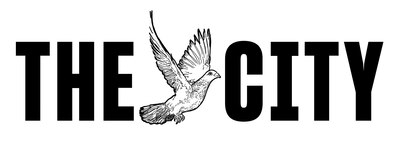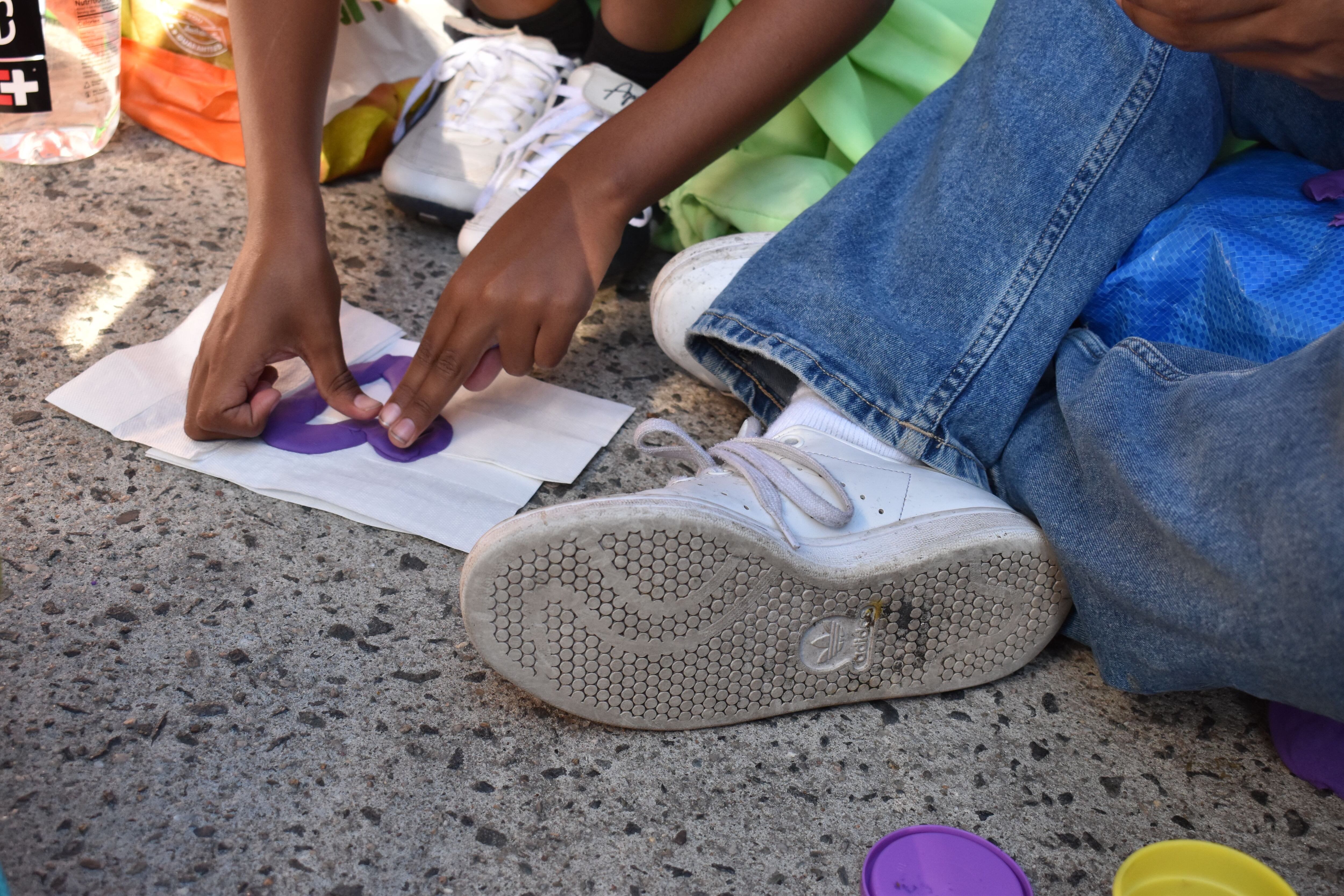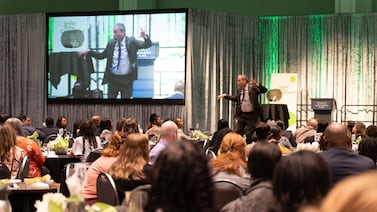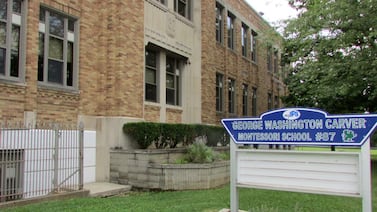This article was originally published on Aug 25 2:03pm EDT by THE CITY.

Sitting on a Manhattan sidewalk on a sunny afternoon, Franyerson, who’s 9, rolled and shaped purple Play-Doh into a heart.
This sweet New York City childhood moment was a rare pause in a journey that has taken him and his father thousands of miles, from Venezuela through the jungle spanning Colombia and Panama, up through Central America and Mexico and across the Rio Grande.
Franyerson and his dad were waiting outside the 30th Street Men’s Intake Center, a massive homeless shelter on the East Side, for a ride that would ferry them up to the homeless family reception center in The Bronx, known as PATH.
He talked fondly of his father buying tablets in Medellín, Colombia, that purify water. And he spoke with delight about playing a game with other kids as he traveled with a guide through the Colombian-Panamanian Darien Gap region jungle. The game was called “sobrevivencia,” which translates to “survival.”
With more hesitation, he spoke of seeing a dead man’s body as he crossed a river.
“I was traumatized from that moment,” he said in Spanish.
Children face serious peril on the journey north as their families seek asylum in the United States. On Monday, two young kids died while attempting to cross the Rio Grande between Mexico and Texas.
The city social services agency estimates that a thousand children who recently arrived in New York and have gone through the shelter system are about to begin school in two weeks, in a strange city. Disrupted learning, illiteracy, language and cultural barriers, and lingering trauma are just some of the challenges they face.
Franyerson’s father, Franklin, who declined to share his last name, said he has a trio of goals now that he’s arrived in New York City: Find a job, ideally as a barber, obtain permanent housing, and get his son enrolled in school.
And according to Mayor Eric Adams, the city is here to help parents like Franklin. Last week, he unveiled details of Project Open Arms, a multi-agency effort to welcome asylum-seeking migrants, get children enrolled in school and help them adjust to their new lives.
Said Adams in a press release: “With strong collaboration with our partners, both in and out of government, this plan highlights how we can lead with compassion and ‘Get Stuff Done’ for those who need it most.”
Project Open Arms
Project Open Arms, as laid out in a nine-page document, pulls in resources from across several city agencies and nonprofits to streamline student enrollment and provide social services to recently arrived families, supported by translation services.
The city’s social services agency will notify the Department of Education’s temporary housing team of any new hotels and shelters, so they can help families enroll children. The temporary housing team will also connect migrants to DOE’s family welcome centers, where counselors identify schools for students, especially schools with support for those who don’t speak English.
Students are supposed to get school transportation from shelters, as well as backpacks and school supplies. And children’s mental health gets a nod, with a promise of “access to small group or individual supports, as needed” highlighted in the plan.
Rita Rodriguez-Engberg, director of immigrant students’ rights at Advocates for Children New York, commended Project Open Arms but raised concerns over whether the city could properly implement the plan amid staff shortages.
“We’re really happy that the city’s finally paying this level of attention to immigrant families,” she said. “We just really hope that they can actually follow through, and not just for this time, but also for the future, given that we see families coming in in this particular situation throughout the year.”
Rodriguez-Engberg also has concerns over whether students will be entered in bilingual programs with teachers who speak English and the students’ native language, which is not available in all schools. The alternative would be a teacher trained to teach children of all backgrounds English, but without the support of a teacher knowing the language.
She said it is also vital for the city to provide students with emotional support, with many having traumas or struggling to adjust to a new country.
“If you can imagine for a second sitting in a classroom where everything is happening in English, you can understand how frustrating and maybe just demoralizing that feels for a child,” she said.
Missing Out and Catching Up
The experiences of earlier waves of asylum-seeking families provide lessons in what it takes to ensure a smooth transition to New York City schools for kids who’ve endured the deprivations of long treks across the Americas.
Katherin Molina arrived about a year and half ago with her husband and two daughters, then ages 7 and 4, after fleeing Honduras because of gang violence. They had a relative in Queens, but needed their own apartment and employment. The children also needed to catch up on learning to read and write, after missing months of school.
Before entering the country, they had been held up in Mexico for around two years under the Migrant Protection Protocols, a President Donald Trump-era policy in which families seeking to enter the United States were instead kept in Mexico for the duration of their immigration proceedings.
That’s when bilingual volunteers, composed of current and retired educators, jumped in to tutor the children via Zoom, teaching them English and Spanish.
While in Mexico, Katherin’s eldest daughter, Marilyn Nicol, received little education, after a brief attempt at getting her into school was cut short. At first, her parents feared she would be kidnapped, and the family suffered from poor treatment from other parents and students. Later, the COVID-19 pandemic disrupted her education.
In all, Molina estimates Marilyn Nicol, now 9 years old, went for about a year and half without school.
Unlike her 6-year-old sister, Marilyn Nicol struggled to adapt to school in the U.S. She went to summer school in person last year to make up for missing much of first grade. Her mother said she was one of few students in the class, and it brought back memories of being detained at the border.
She still hadn’t fully learned to read Spanish when she arrived in NYC, which made learning English all the more difficult. Despite the obstacles, Molina said Marilyn Nicol has been able to improve significantly in English.
“Today, she can read in Spanish. She can add, subtract, all of that. She’s made great strides. And in English as well,” Molina said in Spanish. “Sometimes we go out and people talk to us in English, and we’re left up in the air, but she says, ‘Mom, they were trying to tell you this.’”
THE CITY is an independent, nonprofit news outlet dedicated to hard-hitting reporting that serves the people of New York.







